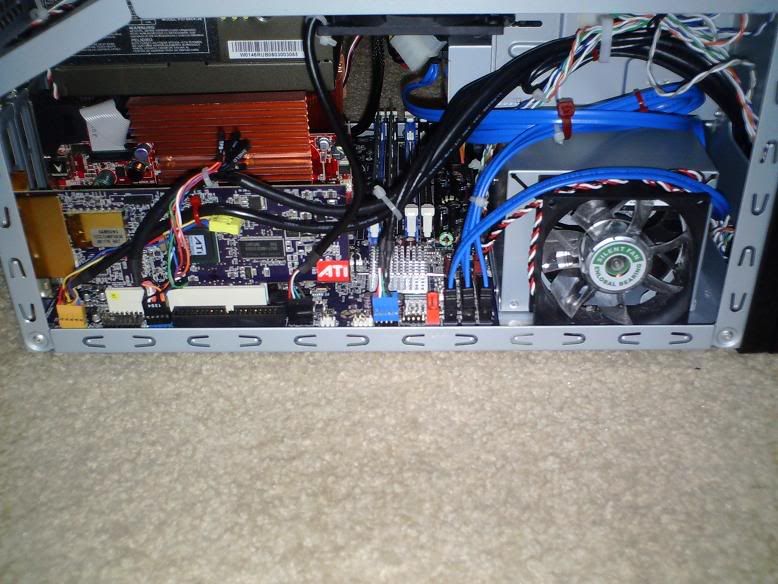Modred189
Can't Read the OP
- Joined
- May 24, 2006
- Messages
- 16,338
I am looking for a new HTPC card. Maybe.
RIght now I have a PNY 9800GT PE. Up until this point it has been a great card. Powerful, quiet (if not very cool running) and does not require any power cables. However, I am running into 2 limitations.
1- Lacks HDMI. Right now I am using a DVI-HDMI adapter, but as I understand it, it will not pass audio through the dvi...?
2- It's starting to lack in the horsepower department. Newer driving games, the only games I play on the TV, are starting to tax the system pretty heavily.
So I'm looking for a reaplacement that is the modern version of the same thing. Requirements:
1- Does not require a power cable. I have a 550w psu, but it's modular and I cannot find the cables.
2- shorter. This is going into a Silverstone SUGO 2b. Anything much longer than the existing card is not going to fit. I unfortunately cannot find the dimensions for this card anywhere, but it is not a long card by any means. The board is a MATX intel board (DG33tl) and the card cannot be as long as the mobo. Any power cords will need to come from the side, not the end of the card.
2.5- Single slot preferred, but I can live with a double slot.
3- Hdmi port
4- Horsepower upgrade. It needs to be faster than the existing card, obviously.
WHile I would PREFER Nvidia, I am open to AMD suggestions as well. No particular brand loyalties in terms of who built the card, but a major company would be preferred.
For reference, here is a shot of the case with some stuff installed:

The card in front is an old ATi TV Wonder card, and the brass heatsink behind it is an ATI 3450, I believe.
EDIT: It has 3gb of ram and a Q6600 cpu. 2 1tb Greenpowers
Edit2- the board is apparently 9.6"X9.6", so the card would need to be shorter than that. Call it 9"
RIght now I have a PNY 9800GT PE. Up until this point it has been a great card. Powerful, quiet (if not very cool running) and does not require any power cables. However, I am running into 2 limitations.
1- Lacks HDMI. Right now I am using a DVI-HDMI adapter, but as I understand it, it will not pass audio through the dvi...?
2- It's starting to lack in the horsepower department. Newer driving games, the only games I play on the TV, are starting to tax the system pretty heavily.
So I'm looking for a reaplacement that is the modern version of the same thing. Requirements:
1- Does not require a power cable. I have a 550w psu, but it's modular and I cannot find the cables.
2- shorter. This is going into a Silverstone SUGO 2b. Anything much longer than the existing card is not going to fit. I unfortunately cannot find the dimensions for this card anywhere, but it is not a long card by any means. The board is a MATX intel board (DG33tl) and the card cannot be as long as the mobo. Any power cords will need to come from the side, not the end of the card.
2.5- Single slot preferred, but I can live with a double slot.
3- Hdmi port
4- Horsepower upgrade. It needs to be faster than the existing card, obviously.
WHile I would PREFER Nvidia, I am open to AMD suggestions as well. No particular brand loyalties in terms of who built the card, but a major company would be preferred.
For reference, here is a shot of the case with some stuff installed:

The card in front is an old ATi TV Wonder card, and the brass heatsink behind it is an ATI 3450, I believe.
EDIT: It has 3gb of ram and a Q6600 cpu. 2 1tb Greenpowers
Edit2- the board is apparently 9.6"X9.6", so the card would need to be shorter than that. Call it 9"
Last edited:
![[H]ard|Forum](/styles/hardforum/xenforo/logo_dark.png)